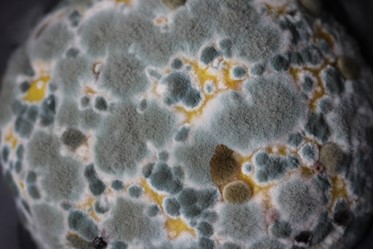
Mold testing plays a crucial role in maintaining indoor air quality and ensuring the safety of occupants in residential, commercial, and institutional buildings. Mold, a type of fungus, can proliferate in damp environments and can pose health risks, especially to individuals with respiratory conditions or allergies. To address these concerns, various standards and regulations govern mold testing practices to ensure thorough inspections, accurate assessments, and compliance with safety protocols. Antonio Madureira of AV Builder Corp provides a comprehensive look at mold testing standards and regulations and their importance in safeguarding indoor environments.
Understanding Mold and its Risks
Mold is a natural part of the environment and thrives in moist conditions. In indoor spaces, mold growth can occur due to factors such as water leaks, humidity, poor ventilation, and inadequate building maintenance. Common types of indoor mold include Aspergillus, Cladosporium, and Stachybotrys, commonly known as black mold. While some molds are relatively harmless, others can produce allergens, irritants, and even toxic substances called mycotoxins, which can cause health issues when airborne spores are inhaled.
Importance of Mold Testing
Mold testing serves several critical purposes in maintaining indoor air quality and ensuring occupant health:
Identification and Assessment: Mold testing identifies the presence of mold, determines the types and concentrations present, and assesses the extent of contamination.
Health Protection: Testing helps mitigate health risks associated with mold exposure, particularly for vulnerable individuals such as children, elderly, and those with respiratory conditions.
Property Protection: Early detection through testing can prevent extensive mold damage to building materials, furnishings, and structural components.
Mold Testing Standards
Several organizations and agencies have established standards and guidelines for mold testing procedures and protocols. These standards aim to ensure consistency, accuracy, and reliability in mold inspections and assessments:
American Industrial Hygiene Association (AIHA): AIHA provides guidelines for conducting mold investigations, sampling methods, and interpreting results to assess indoor air quality.
Environmental Protection Agency (EPA): The EPA offers resources and guidelines for mold remediation and indoor air quality management, emphasizing the importance of moisture control and prevention strategies.
National Institute for Occupational Safety and Health (NIOSH): NIOSH provides guidelines for occupational exposure to mold in workplace settings, focusing on worker safety and health protections.
American Conference of Governmental Industrial Hygienists (ACGIH): ACGIH publishes guidelines for evaluating airborne exposures to mold in occupational and residential environments.
Mold Testing Process
The mold testing process typically involves the following steps:
Visual Inspection: A qualified mold inspector conducts a thorough visual inspection of the property to identify areas of concern, moisture sources, and visible mold growth.
Sampling: Samples may be collected using various methods, including air sampling (to measure airborne mold spores), surface sampling (to detect mold on surfaces), and bulk sampling (to analyze materials suspected of containing mold).
Laboratory Analysis: Samples are sent to accredited laboratories for analysis to identify mold species and quantify spore concentrations. Results are interpreted based on established guidelines and standards.
Report and Recommendations: The mold inspector provides a detailed report summarizing findings, interpreting laboratory results, and recommending appropriate actions for remediation and mold prevention.

Regulatory Compliance
Compliance with mold testing standards and regulations is essential for ensuring the accuracy and reliability of testing procedures. Key aspects of regulatory compliance include:
Certification and Accreditation: Mold inspectors should be certified by recognized organizations and adhere to established protocols for sampling, analysis, and reporting.
Documentation and Record-Keeping: Maintaining detailed records of inspections, sampling protocols, laboratory results, and remediation activities is critical for demonstrating compliance with regulatory requirements.
Health and Safety Protocols: Following health and safety protocols, including personal protective equipment (PPE) for inspectors and remediation workers, minimizes exposure risks during mold testing and remediation activities.
Challenges and Considerations
Despite the importance of mold testing, several challenges exist in implementing effective testing programs:
Complexity of Mold Identification: Differentiating between various mold species and interpreting their health implications requires specialized knowledge and expertise.
Cost and Resources: Mold testing can be costly, particularly for large or complex buildings, requiring adequate budget allocation for comprehensive inspections and remediation.
Regulatory Variability: Regulatory requirements for mold testing and remediation may vary by jurisdiction, necessitating awareness of local, state, and federal guidelines.
Conclusion
Mold testing standards and regulations play a critical role in safeguarding indoor environments from the health risks associated with mold contamination. By adhering to established guidelines and employing qualified professionals, property owners, facility managers, and occupants can ensure effective mold inspections, accurate assessments, and timely remediation efforts. Protecting indoor air quality through rigorous mold testing practices contributes to healthier living and working environments for everyone.